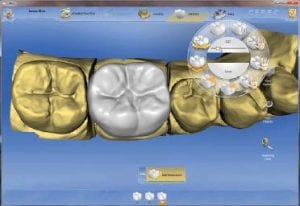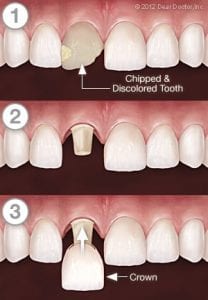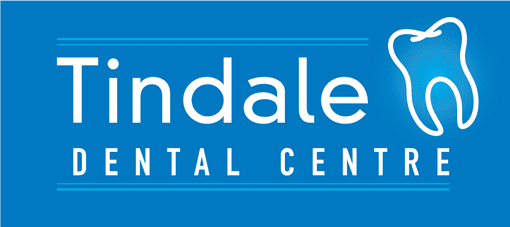The dentists at Tindale Dental Centre offer a wide range of restorative dental treatments using the highest quality materials and latest in technology available.

At Tindale Dental Centre we believe in utilising the latest techniques to give our patients’ teeth the most aesthetic and least destructive restorative solution.
We can replace old metallic fillings when this is required with either the more aesthetic composite resin restorations (fillings) or if more tooth structure has been lost then we can offer our patients the aesthetic and biocompatible all porcelain restorations.
These restorations are imaged using CADCAM (CEREC) technology and milled on premises to be bonded onto the tooth the same day.
Often more of the tooth has been lost or the tooth has been cracked and a more substantial long term restorative solution is required. If this has happened we are able to offer our patients the latest in crown technology.
We offer our patients both the highly biocompatible full porcelain crowns, designed and created in Sydney .
CROWNS
Dentistry is an art as well as a science; dental crowns offer a perfect example of this. A dental crown or “cap” is a covering that fits over a damaged, decayed or unattractive tooth. It can even replace a tooth entirely as part of dental bridgework.
A crown completely covers a tooth above the gum line. This is in contrast to a dental veneer, which only covers a tooth’s front surface and needs natural tooth structure to support it. Therefore, if a tooth is missing a significant amount of structure above the gum line, a crown would be the restoration of choice.
Crowns strengthen damaged teeth, allowing them to function normally again. When crafted from today’s high-tech porcelains (dental ceramics), crowns are virtually indistinguishable from natural teeth. They can even be designed to improve upon a tooth’s original appearance.
Crowning or Capping a Tooth

Crowning or capping a tooth will usually take two visits to Tindale Dental. At the first visit, your tooth is prepared to receive its new crown. First, it is shaped to fit inside the new covering. This will involve some drilling to give the tooth a uniform shape. The tooth and the surrounding area will be numbed beforehand. If there is very little tooth structure left to begin with, the tooth may have to be built up with filling material, rather than filed down, to support the crown.
After the tooth is prepared, impressions of your teeth are taken and sent to the dental laboratory. There, the impressions will be used to make models of your teeth for the creation of a crown. The models will serve as guides to the highly skilled lab technicians, who will ensure that your new crown is designed to enhance your smile and function well within your bite.
Before you leave the Surgery, a temporary crown will be attached to your tooth to protect it until the permanent crown is ready. At the second visit, your permanent crown will be attached to your tooth with either a resin that hardens when exposed to a special light source, or a type of permanent cement.
Caring for Your Crowns
Crowns require the same conscientious care as your natural teeth. Be sure to brush and interproximally clean between all of your teeth — restored and natural — every day to reduce the buildup of dental plaque and biofilm. When you have crowns, it is even more important to maintain your regular schedule of cleanings at Tindale Dental Centre. Avoid using your teeth as tools (to open packages, for example). If you have a grinding habit, wearing a night guard would be a good idea to protect your teeth and your investment.
